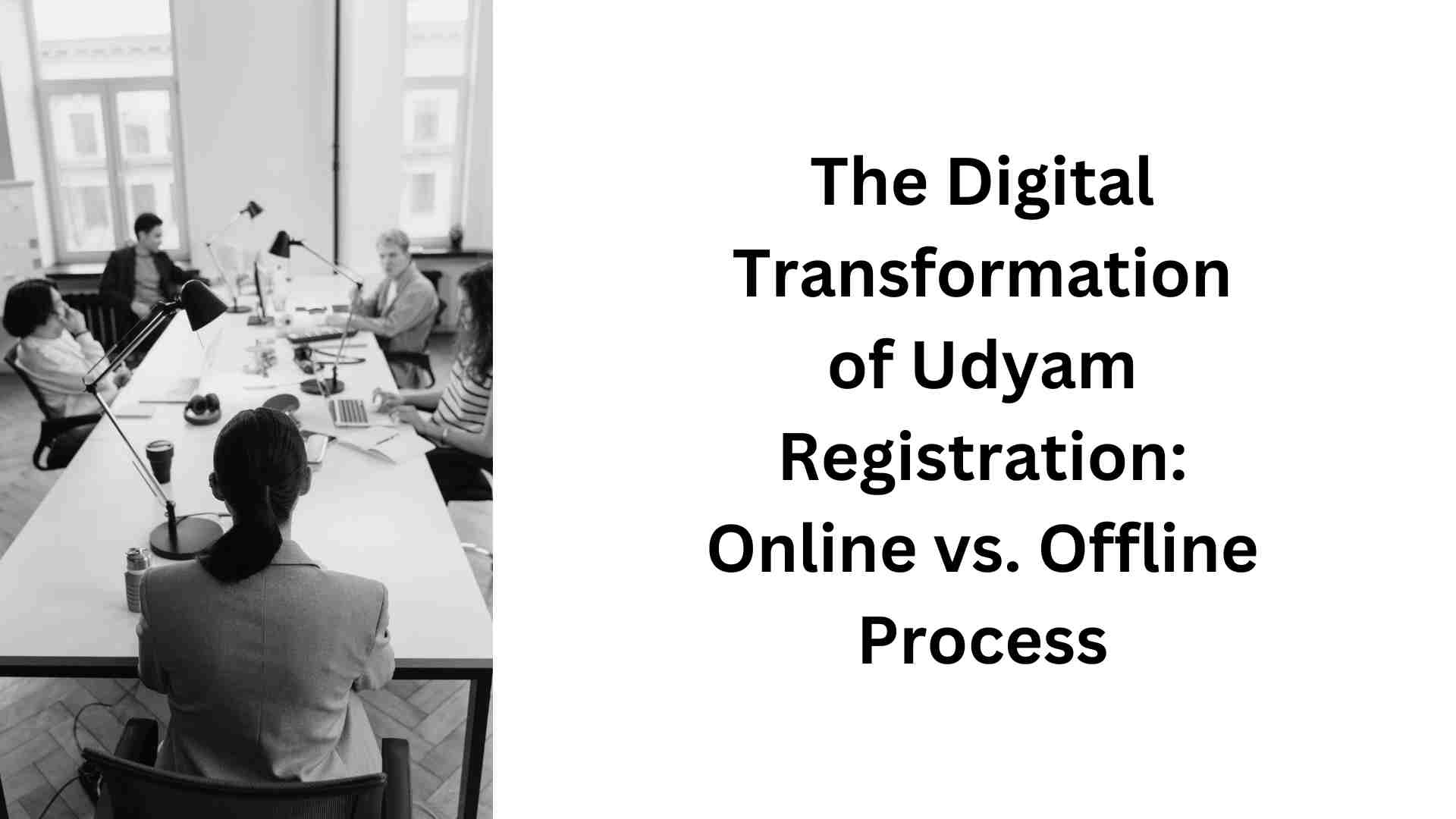
Udyam Registration Certificate is a government initiative in India aimed at registering and classifying micro, small, and medium-sized enterprises (MSMEs). It was introduced to replace the earlier system of MSME registration and is part of the Indian government’s efforts to support and promote the growth of small and medium-sized businesses in the country.
The advent of technology has revolutionized how businesses operate and interact with government agencies. This digital transformation has significantly impacted processes such as Udyam Registration, a crucial step for Indian businesses seeking to avail themselves of government benefits and establish their identity as micro, small, or medium enterprises (MSMEs). In this article, we explore the digital transformation of Udyam Registration, comparing the online and offline processes, and the implications for businesses in India.
The Traditional Offline Process
MSMEs looking to register their businesses had to go through a predominantly offline process. This involved visiting government offices, filling out physical forms, and submitting hard copies of documents. The offline process, while functional, was often time-consuming and cumbersome, leading to delays and inefficiencies.
Businesses faced various challenges with the offline process, such as geographical constraints, long waiting times, and the risk of misplacing important documents. It created barriers that hindered the growth of small enterprises and discouraged many from participating in government schemes and incentives.
The Modern Online Process
With the digital transformation of Udyam Registration, businesses can now complete the process online. This transition has simplified and expedited registration in several ways:
Accessibility:
The online platform is accessible from anywhere with an internet connection, making it more inclusive for businesses across the country, including those in remote areas.
User-Friendly Interface:
The online portal provides a user-friendly interface, guiding businesses through the registration process step by step, reducing the chances of errors or omissions.
Document Upload:
Businesses can securely upload necessary documents, eliminating the risk of losing physical copies and streamlining the verification process.
Faster Processing:
Online registrations are typically processed more quickly, reducing waiting times for businesses to receive their Udyam Registration Certificate.
Transparency:
The digital process offers greater transparency, allowing businesses to track the status of their applications and verify the legitimacy of their Udyam Registration Certificates.
The Benefits of Online Udyam Registration
The shift from an offline to an online Udyam Registration process offers numerous advantages for businesses. Here are some key benefits:
1. Accessibility and Inclusivity:
The online platform ensures that businesses, regardless of their geographical location, can easily register. It levels the playing field, allowing rural and remote businesses to participate in the registration process without the need for extensive travel.
2. Efficiency and Time-Saving:
Online registration is a quicker process. Businesses can complete the necessary steps from the comfort of their office or home, saving valuable time that can be redirected towards core business activities.
3. User-Friendly Interface:
The digital platform is designed with user-friendliness in mind. It provides clear instructions and reduces the likelihood of errors in the application, ensuring a smoother registration process.
4. Document Management:
Online registration eliminates the risk of losing or damaging physical documents. Businesses can securely upload and store their documentation, making it easier to retrieve and share when required.
5. Real-Time Status Tracking:
The online platform allows businesses to monitor the status of their registration applications in real-time. This transparency ensures that businesses are aware of the progress and can plan accordingly.
6. Reduced Paperwork:
Going digital means reduced paperwork, which is not only eco-friendly but also simplifies document management and compliance for businesses.
7. Improved Data Security:
Online platforms often incorporate robust security measures, protecting sensitive business information and documents from unauthorized access or loss.
You can also Udyam Certificate Download
Challenges and Considerations
While the digital transformation of Udyam Registration offers significant advantages, it’s essential to consider potential challenges and concerns:
1. Digital Literacy:
Some small businesses and entrepreneurs may lack digital literacy, which can be a barrier to adopting the online registration process. Supporting digital education and accessibility is crucial in addressing this issue.
2. Internet Connectivity:
In rural and remote areas, reliable internet connectivity may still be a challenge. The government should work to ensure that businesses in these areas have access to a stable internet connection to use the online platform effectively.
3. Cybersecurity:
Given the sensitive data involved, robust cybersecurity measures are essential to protect businesses and their information from potential threats.
4. Transition Period:
Some businesses may find the transition from offline to online registration daunting. Offering a period of overlap where both options are available could help ease the shift.
Conclusion
The digital transformation of Udyam Registration is a significant step forward, simplifying the process and making it more inclusive for businesses across India. The benefits of accessibility, efficiency, transparency, and document management provided by the online platform are substantial.
Indian businesses should embrace this shift, recognizing it as not only a compliance requirement but also as an opportunity to streamline operations and access government support more efficiently. As the country continues its journey towards becoming a digital economy, the transition to online Udyam Registration aligns with the broader vision of a digitally empowered India, where businesses, regardless of their location or size, can harness the full potential of technology for growth and development.


